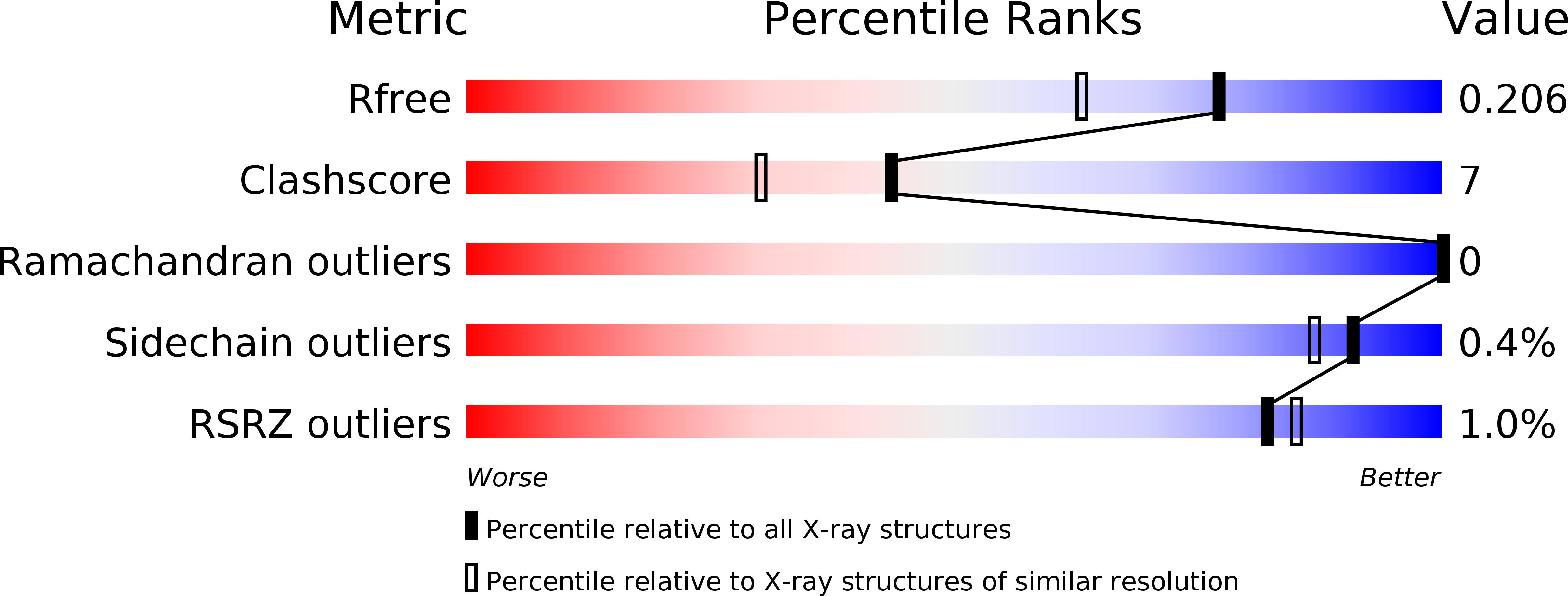Structure of a putative trans-editing enzyme for prolyl-tRNA synthetase from Aeropyrum pernix K1 at 1.7 A resolution.
Murayama, K., Kato-Murayama, M., Katsura, K., Uchikubo-Kamo, T., Yamaguchi-Hirafuji, M., Kawazoe, M., Akasaka, R., Hanawa-Suetsugu, K., Hori-Takemoto, C., Terada, T., Shirouzu, M., Yokoyama, S.(2005) Acta Crystallogr Sect F Struct Biol Cryst Commun 61: 26-29
- PubMed: 16508081
- DOI: https://doi.org/10.1107/S1744309104032555
- Primary Citation of Related Structures:
1WDV - PubMed Abstract:
The crystal structure of APE2540, the putative trans-editing enzyme ProX from Aeropyrum pernix K1, was determined in a high-throughput manner. The crystal belongs to the monoclinic space group P2(1), with unit-cell parameters a = 47.4, b = 58.9, c = 53.6 A, beta = 106.8 degrees. The structure was solved by the multiwavelength anomalous dispersion method at 1.7 A and refined to an R factor of 16.8% (Rfree = 20.5%). The crystal structure includes two protein molecules in the asymmetric unit. Each monomer consists of eight beta-strands and seven alpha-helices. A structure-homology search revealed similarity between the trans-editing enzyme YbaK (or cysteinyl-tRNAPro deacylase) from Haemophilus influenzae (HI1434; 22% sequence identity) and putative ProX proteins from Caulobacter crescentus (16%) and Agrobacterium tumefaciens (21%).
Organizational Affiliation:
RIKEN Genomic Sciences Center, Yokohama, Japan.


















